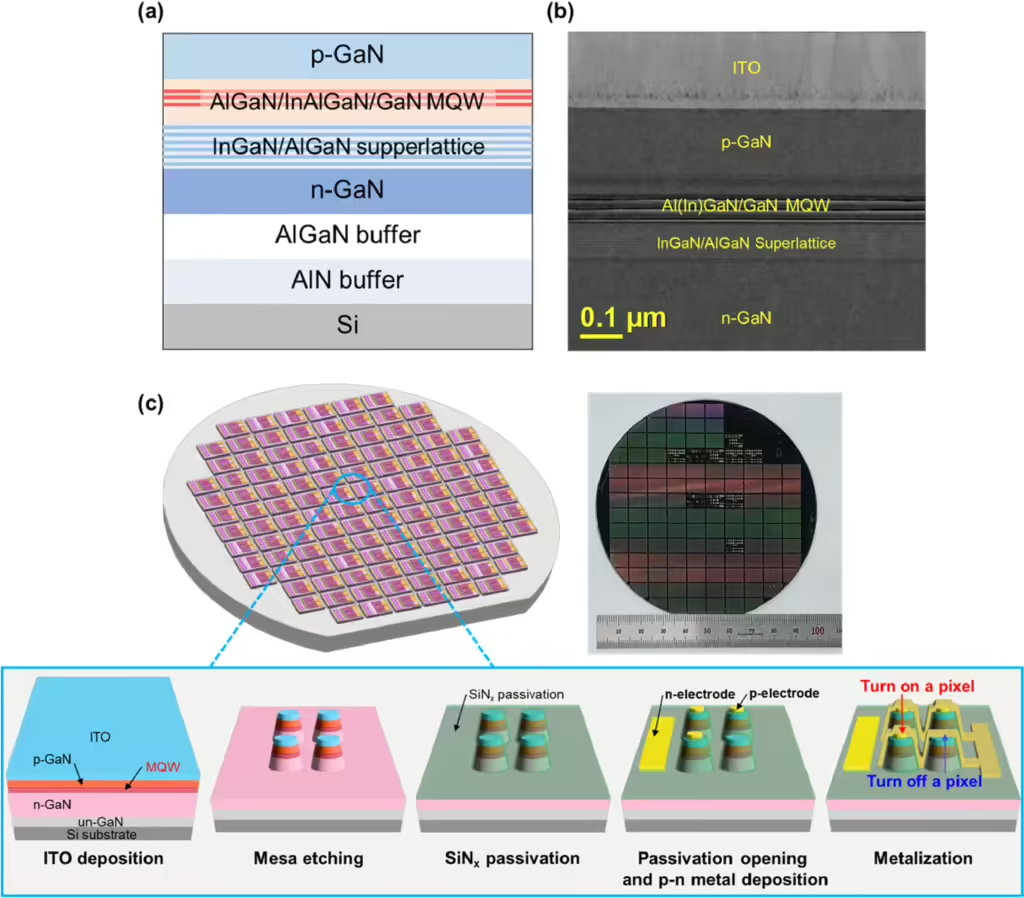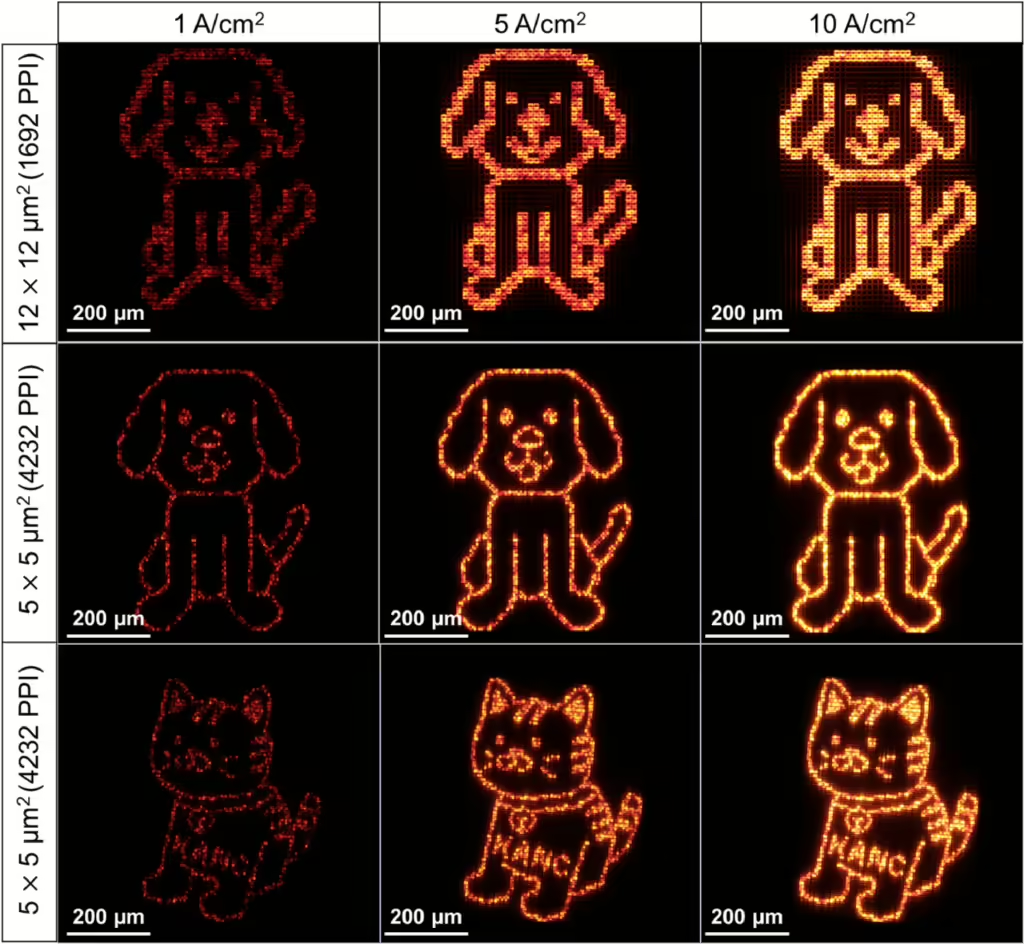Researchers in Korea have investigated the size-dependent optoelectronic characteristics of Indium Gallium Nitride/Gallium Nitride (InGaN/GaN) red MicroLEDs grown on silicon (Si) substrates. The study is motivated by the potential of MicroLEDs in display technologies due to their high brightness, long lifetime, superior contrast ratio, and high resolution. However, the development of efficient red MicroLEDs has been challenging because conventional AlGaInP/GaInP systems exhibit low external quantum efficiency (EQE) and require high injection currents.

AlGaInP/GaInP systems generally have high luminous efficiency for red, orange, and yellow LEDs. However, they often suffer from lower EQE compared to other materials, especially at longer wavelengths. To achieve high brightness, AlGaInP/GaInP LEDs often require high injection currents, which can lead to higher power consumption and heat generation. However, these materials are part of the III-V semiconductor family, which are widely used in optoelectronic applications due to their direct bandgap properties and their LEDs are commonly used in displays, traffic lights, automotive lighting, and other applications where bright red, orange, or yellow light is needed.
By contrast, InGaN/GaN systems offer a promising alternative. Using InGaN/GaN is crucial because they can overcome these limitations by providing better performance and allowing for large-scale production with improved thermal conductivity when grown on Si substrates.
The research involved fabricating MicroLEDs of various sizes (5, 12, 30, 50, and 100 µm) and analyzing their optical and electrical characteristics. The epitaxial layers were grown on 4-inch Si (111) substrates using metal-organic chemical vapor deposition (MOCVD). The structure consisted of a buffer layer, superlattice, multiple quantum wells (MQW), and a p-GaN contact layer. Indium tin oxide (ITO) was used for the p-electrode, and a three-step inductively coupled plasma-reactive ion etching process created the mesa structures.

The study also explored driving the MicroLEDs using pulse-width modulation (PWM) to counteract the blue shift in peak wavelength caused by the quantum confined stark effect (QCSE) and band-filling effects. The results demonstrated a high resolution of 4232 PPI for the MicroLED arrays, with EQE varying by device size and a peak EQE of 0.52% for 5 µm LEDs. A blue shift in peak wavelength was observed with increasing current density, attributed to QCSE and band-filling effects, resulting in a shift from red to orange emission. The PWM technique effectively controlled LED brightness and mitigated wavelength shifts, enabling linear grayscale representation without peak shifts.
Compared to other studies on InGaN/GaN red MicroLEDs, this research achieved higher EQE and lower current requirements, making these devices more suitable for high-resolution displays. The paper concludes that developing InGaN/GaN red MicroLEDs on Si substrates represents a significant milestone, laying the groundwork for their integration into full-color MicroLED displays. According to the researchers, the choice of InGaN/GaN was essential to address the efficiency and performance limitations of previous technologies, positioning these materials as key components for future display applications.
Reference
Juhyuk Park, Eun-Jeong Youn, Woo Jin Baek, Eun-Kyung Chu, Hyun Soo Kim, Dae-Myeong Geum, Joon Pyo Kim, Bong Ho Kim, Song-Hyeon Kuk, Hyeong-Ho Park, and Sang Hyeon Kim, “Size-dependent optoelectronic characteristics of InGaN/GaN red micro-LEDs on 4-inch Si substrates: high pixel density arrays demonstration,” Opt. Express 32, 24242-24250 (2024)

